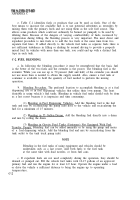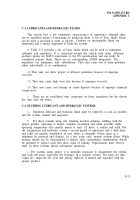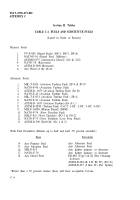TM-9-2350-275-BD - Page 197 of 223
TM 9-2350-275-BD
APPENDIX B
SECTION III. Test Equipment
B-3. FIELD EXPEDIENT TEST EQUIPMENT
General Information:
Sometimes, in the process of assessing the battlefield damage, it is necessary to make
voltage and resistance measurements to determine where the fault is. Standard test
equipment (voltmeter, ohm meter, SWR meter, etc.) should be used whenever possible.
If standard test equipment is not available, field expedient equipment can be fabricated
using parts commonly found on the vehicle and in the forward maintenance areas. The
following paragraph provides fabrication instructions for making a voltmeter,
ohmmeter, and RF transmitter output tester.
NOTE
Accurate measurements are not available. These are Go - No-Go meters.
1.
Making a Voltmeter.
A voltmeter can be made
from a light bulb and two pieces of wire.
The pieces of wire can be connected to
the case and center terminal of the
bulb by means of solder, twisting, or
simply holding the wire ends against
the bulb (see illustration). The voltage
rating of the bulb should be close to
the value of the expected voltage being
measured. For voltages in the 18 to 30
vdc range, any light bulb on the driver’s
master panel, driver's instrument panel,
gunner’s panel, commander’s panel, or
gunner’s primary sight can be used. For
voltages of 5 vdc or less a two-battery
cell flashlight bulb can be used. The
presence of voltage will cause the bulb to
glow. Polarity of dc voltage does not have
to be observed; even ac voltage can be measured.
Twist exposed wire ends together and apply
solder, if available, and solder. Touch to
voltage source when ready to make measurement.
B-7
Back to Top




















